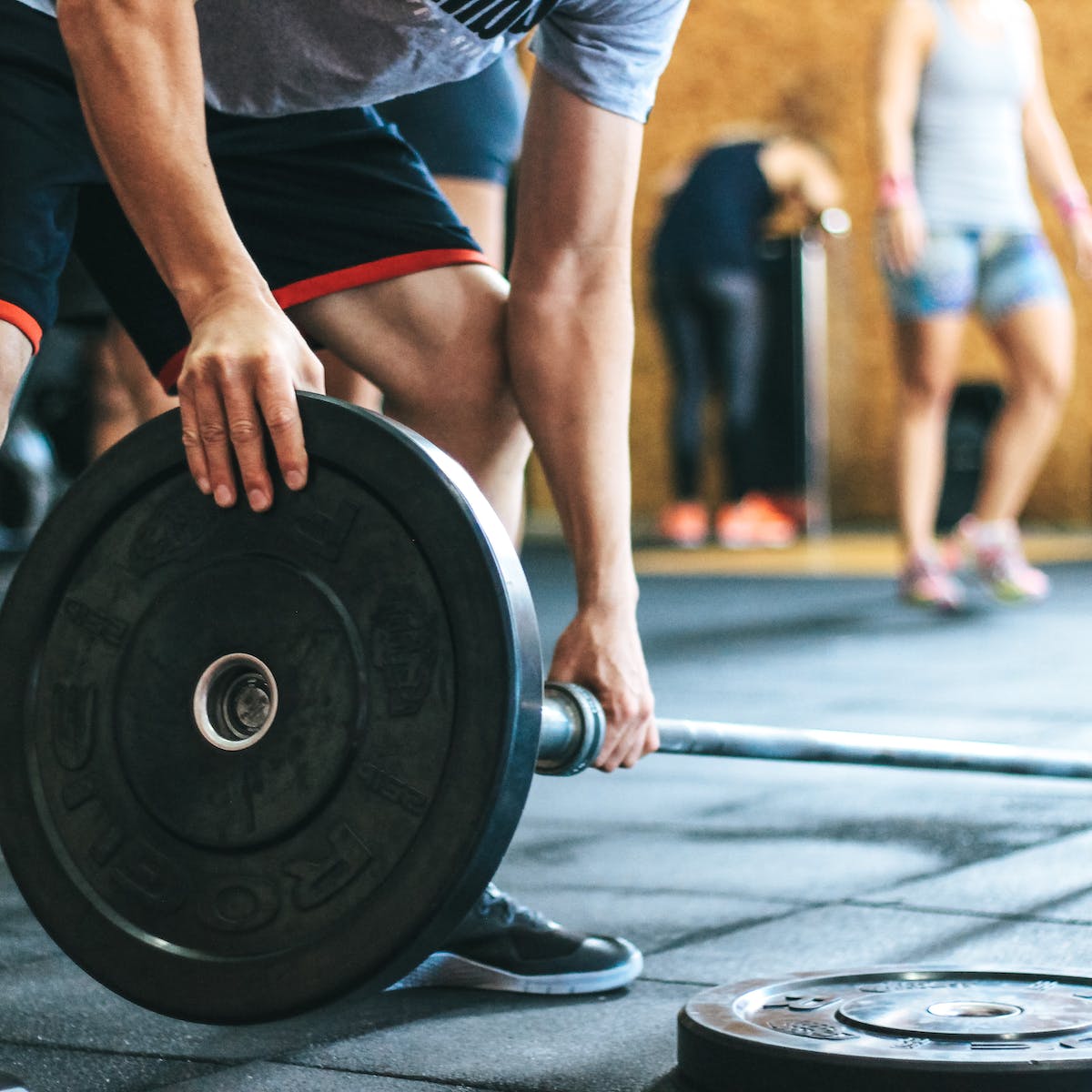
Unlocking Your Inner Powerhouse: Tips for First-Time Powerlifters
Powerlifting, a formidable strength sport, stands as a testament to the pursuit of raw strength and athletic prowess. Comprising the three primary lifts – squat, bench press, and deadlift – powerlifting focuses on pushing the limits of one's physical capabilities. In recent years, there has been a notable surge in the popularity of powerlifting, especially among beginners seeking a dynamic and empowering form of fitness. This surge is fueled by the sport's ability to foster both physical and mental strength, attracting individuals from various fitness backgrounds. As we explore the world of powerlifting, it becomes paramount to set the stage for a successful and safe introduction. Whether you're a seasoned gym-goer or a complete novice, understanding the foundational dos and don'ts is essential for unlocking the full potential of powerlifting while ensuring a journey that is both effective and injury-free.
Understanding the Basics
Understanding the basics of powerlifting is pivotal for anyone venturing into this strength-centric realm. Powerlifting, at its core, revolves around three fundamental lifts: the squat, bench press, and deadlift. The squat targets the lower body, engaging the quadriceps, hamstrings, and glutes. The bench press challenges the upper body, primarily working the chest, shoulders, and triceps. The deadlift, a full-body compound movement, tests overall strength by involving the back, glutes, hamstrings, and core. Mastering the fundamentals of these lifts is not only the foundation of powerlifting success but also a crucial aspect of injury prevention. Proper form and technique are paramount, not just for performance gains but also for establishing a safe and sustainable powerlifting journey. By grasping the nuances of each lift and committing to mastering the basics, individuals can lay a solid groundwork for their powerlifting endeavors, fostering both strength and longevity in their fitness pursuits.
The Dos of Trying Powerlifting
The first and foremost "do" when it comes to trying powerlifting is to educate yourself thoroughly. Before stepping into the powerlifting arena, take the time to research and understand the techniques and rules associated with the sport. Look into resources that detail proper form, lifting cues, and competition regulations for the squat, bench press, and deadlift. Equipping yourself with knowledge not only enhances your performance but also minimizes the risk of injuries. Additionally, seeking guidance from experienced lifters or knowledgeable coaches is invaluable. Learning from those who have traversed the powerlifting journey before you can provide practical insights, correctional feedback, and the motivation needed to navigate the complexities of this strength sport. Education and mentorship form the bedrock of a successful initiation into powerlifting, ensuring a foundation built on both competence and confidence.
Initiating your powerlifting journey with a proper warm-up is a critical "do" that cannot be overstated. Before delving into the intensity of squats, bench presses, and deadlifts, it is imperative to prepare your body adequately. Begin with dynamic stretching and mobility exercises to enhance flexibility and activate the muscles you'll be engaging in during your lifts. This dynamic stretching can include leg swings, arm circles, and hip rotations. Subsequently, ease into your warm-up sets with gradually increasing weights to acclimate your body to the upcoming demands. This not only promotes blood flow and joint lubrication but also mentally prepares you for the tasks ahead. A well-structured warm-up routine sets the stage for optimal performance and reduces the risk of injuries, underscoring the importance of incorporating this essential "do" into your powerlifting regimen from the outset.
A key principle in the realm of powerlifting is the unwavering emphasis on form over the sheer amount of weight lifted—a principle that stands as a crucial "do." Prioritizing proper lifting technique ensures not only optimal muscle engagement but also mitigates the risk of injuries. Each repetition should be executed with precision, adhering to the specific mechanics of the squat, bench press, and deadlift. By focusing on maintaining impeccable form, lifters can target the intended muscle groups more effectively, fostering both strength gains and injury prevention. Importantly, avoiding the temptation of ego lifting, or attempting weights beyond one's current capabilities, is paramount. Succumbing to the allure of heavier loads at the expense of form compromises the integrity of the lift and increases the likelihood of injury. By upholding the principle of prioritizing form over the amount of weight, powerlifters can establish a solid foundation for progress while safeguarding their long-term well-being in the sport.
Listening to your body is an indispensable aspect of well-rounded powerlifting practice. Tuning into subtle cues and paying attention to signs of fatigue or discomfort is essential for preventing burnout and injuries. Powerlifting places significant demands on the body and pushing through pain or exhaustion can have detrimental consequences. When your body signals the need for rest, it's crucial to heed these signs rather than dismissing them. Incorporating adequate rest and recovery into your routine is not a sign of weakness but a strategic move for long-term success. This may involve incorporating rest days into your training schedule, prioritizing quality sleep, and considering techniques such as foam rolling or mobility exercises to support muscle recovery. By fostering a symbiotic relationship with your body, acknowledging its limits, and responding to its needs, you create a foundation for sustainable strength development and overall well-being in your powerlifting journey.
The Don'ts of Trying Powerlifting
Avoiding overtraining is a pivotal aspect of optimizing performance and safeguarding one's well-being in the world of powerlifting. Acknowledging the significance of rest days is paramount, as they provide the body with essential time to recuperate and repair. Overtraining, characterized by pushing the body beyond its capacity without ample recovery, can lead to fatigue, decreased performance, and an increased risk of injuries. It's imperative to strike a balance between training intensity and allowing adequate recovery time. Incorporating scheduled rest days, adjusting workout frequency, and varying intensity levels are key strategies to prevent overtraining. By prioritizing a mindful approach to training that values both effort and recovery, powerlifters can ensure sustained progress and longevity in their pursuit of strength without compromising their overall health.
Steering clear of ego lifting is a cardinal rule in the realm of powerlifting, underscoring the importance of prioritizing safety over showcasing sheer strength. The temptation to lift heavier weights than one's current capacity can be alluring, especially in a culture that often associates success with lifting impressive loads. However, succumbing to this temptation jeopardizes not only the integrity of the lift but also the lifter's safety. Prioritizing proper form and technique should always supersede the desire to impress. By resisting the urge to ego lift, powerlifters not only reduce the risk of injuries but also lay the groundwork for consistent progress. This approach fosters a mindset that values the journey of improvement over immediate gratification, promoting both physical well-being and a sustainable, long-term commitment to the sport.
Skipping warm-up sets in powerlifting is a perilous choice that increases the risk of injuries and compromises the effectiveness of the overall workout. Warm-ups serve as a crucial preparatory phase, priming the body for the demands of heavy lifting by increasing blood flow, enhancing flexibility, and activating key muscle groups. Neglecting warm-up sets denies the body the opportunity to adapt gradually to increased loads, making it more susceptible to strains and injuries. Incorporating proper warm-up sets into the powerlifting routine is a non-negotiable practice. Starting with lighter weights and progressively increasing the load allows the body to acclimate to the impending intensity of the main lifts, reducing the likelihood of muscle pulls, joint stress, and other potential injuries. Prioritizing warm-up sets is an investment in both short-term safety and long-term success in the powerlifting journey.
Neglecting assistance exercises is a common pitfall in powerlifting that can hinder overall strength development and compromise the balance of muscle engagement. While the core powerlifting lifts—squat, bench press, and deadlift—are paramount, incorporating accessory movements is equally crucial for a well-rounded strength training program. These exercises target specific muscle groups that may be underdeveloped or require additional attention to support the primary lifts. Neglecting these accessory movements may lead to muscular imbalances and limit the lifter's potential for improvement. Smartly chosen exercises, such as lunges, rows, or core stabilizers, can complement the core lifts by addressing weaknesses, enhancing joint stability, and preventing overuse injuries. A holistic approach that encompasses both primary and accessory exercises is key to fostering a robust, balanced, and injury-resistant physique in the realm of powerlifting.
Building a Support System
Joining a powerlifting community or gym can significantly enhance one's journey in the strength sport, offering a multitude of benefits that extend beyond the physical aspect of training. Training alongside like-minded individuals fosters a sense of camaraderie and shared enthusiasm, creating a supportive environment that can be motivating and inspiring. Being part of a community allows for the exchange of knowledge, experiences, and tips, offering valuable insights that can contribute to one's progress. Moreover, the opportunity to seek guidance from experienced lifters within the community provides invaluable mentorship, helping novices navigate the intricacies of powerlifting. Whether it's receiving advice on lifting techniques, programming, or nutrition, the collective wisdom within a powerlifting community can be a tremendous asset. The encouragement and camaraderie of such a setting not only enhances the overall training experience but also contributes to a positive and empowering journey in the pursuit of strength.
In the realm of powerlifting, celebrating small wins is an essential practice that contributes to sustained motivation and a positive mindset. Acknowledging progress, no matter how incremental, is pivotal for fostering a sense of accomplishment and dedication to the journey. Whether it's achieving a personal best, mastering a challenging technique, or consistently adhering to a training schedule, each small win deserves recognition. Setting realistic short-term and long-term goals is integral to this process, providing a roadmap for progress and allowing lifters to break down their larger objectives into manageable, achievable steps. Embracing the joy of small victories not only boosts morale but also creates a cycle of motivation that propels individuals forward in their powerlifting journey, turning what might seem like an arduous path into a series of achievable milestones.
In conclusion, embarking on a journey in powerlifting demands a thoughtful blend of discipline, knowledge, and a keen awareness of one's body. To recap the dos and don'ts for first-time powerlifters, it's imperative to prioritize education, emphasizing proper technique over sheer weight, incorporating consistent training while recognizing the importance of rest and recovery, and avoiding the pitfalls of ego lifting and skipping warm-up sets. Joining a supportive community and celebrating small wins can significantly enhance the overall experience. A positive and supportive approach to powerlifting not only contributes to physical progress but also fosters a mindset that embraces challenges and finds joy in the process. Lastly, it's crucial to understand that powerlifting is a lifelong journey of strength building. Patience, dedication, and a commitment to continual improvement define this sport. By embracing these principles, first-time powerlifters can lay the foundation for a fulfilling and enduring pursuit of strength and self-discovery in the dynamic world of powerlifting. Happy Lifting.



